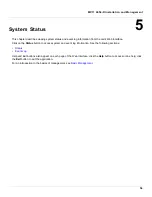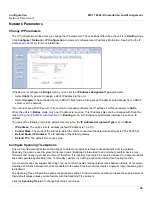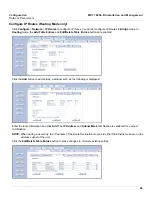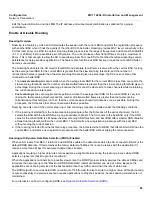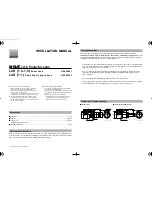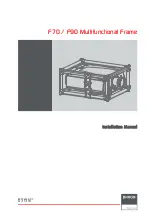
Configuration
MP.11 4954-R Installation and Management
Network Parameters
67
Note that an SU may roam from one BSU with a bandwidth setting to another BSU with a different bandwidth setting.
Since in this case more channels need to be scanned than with only one channel bandwidth setting, it is important that
the channel priority list mentioned above is properly used to limit scanning time.
When
Scanning Across Bandwidth
on the SU is enabled (see
Interface Parameters
), the SU supports bandwidth
selection of the communications channel of either 20 MHz, 10 MHz, or 5 MHz. This allows the BSUs in the network to be
set to different bandwidths while an SU can still roam from one BSU to the next, because it will not only scan other
frequencies (when the signal level or quality are lower than the threshold) but it will also switch to other bandwidths to find
a BSU that may be on another bandwidth than its current one.
During roaming, the SU will start scanning first the channels on its
current
bandwidth from the “Active” channel list
provided by the BSU in order to find a BSU to register, since that is the most likely setting for other BSUs in the network.
If the SU cannot find an acceptable roaming candidate, it will switch bandwidth and start scanning channels on that
corresponding bandwidth from the “Active” channel list provided by the BSU. The process is repeated until the SU finds
an appropriate BSU to register.
In the example above, an SU whose current bandwidth is 20 MHz will start scanning all active channels within the
bandwidth of 20 MHz. If it cannot find a suitable BSU, it will switch to a 10 MHz bandwidth and start scanning all active
channels within that bandwidth, in this case channel 56 first since it is configured as high priority and channel 60 next. No
channels will be scanned on the 5 MHz bandwidth since all those channels are configured as inactive.
SU Screen
Enable or disable the Roaming feature in the
Roaming Status
drop-down box. The default value is disabled.


